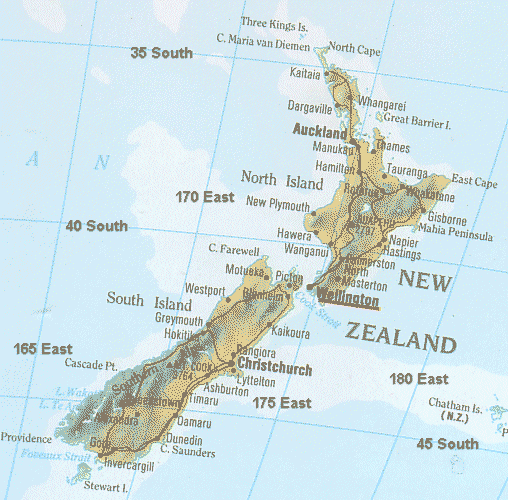Database
|
Trend
79-05
|
Comments
|
HadSST2
|
??
|
The marine component of
HadCRUT2 and HadCRUT3 Trying to access this
|
HadCRUT3
|
0.81
|
Update of HadCRUT2,
normally certain to be adopted by IPCC.
|
| HadCRUT2 |
0.63
|
IPCC land/sea combined
|
NCDCv2
|
0.54
|
USA based SST dataset by
NOAA / NCDC
|
Reynolds
|
0.45
|
USA based SST's developed
by R Reynolds of NOAA
|
MSU
|
0.28
|
Satellites reading lower
troposphere, bottom 8kms of atmosphere
|
CRUT2
|
0.26
|
IPCC land only, now
superceded
|
CRUT3
|
0.25
|
Land only latest update
just out, likely will be adopted IPCC
|
NIWA
|
0.25
|
NIWA's seven station NZ
anomaly series
|
MOHMAT
|
0.12
|
UKMO Hadley Centre marine
night air readings from ships, buoys etc
|
 A look at the NZ map
shows that most of the country is covered by four grid cells bounded by
35 to 45 South and 170 to 180 East. I sometimes refer
to these as Auckland, East Cape, Hokitika and Masterton.
A look at the NZ map
shows that most of the country is covered by four grid cells bounded by
35 to 45 South and 170 to 180 East. I sometimes refer
to these as Auckland, East Cape, Hokitika and Masterton.